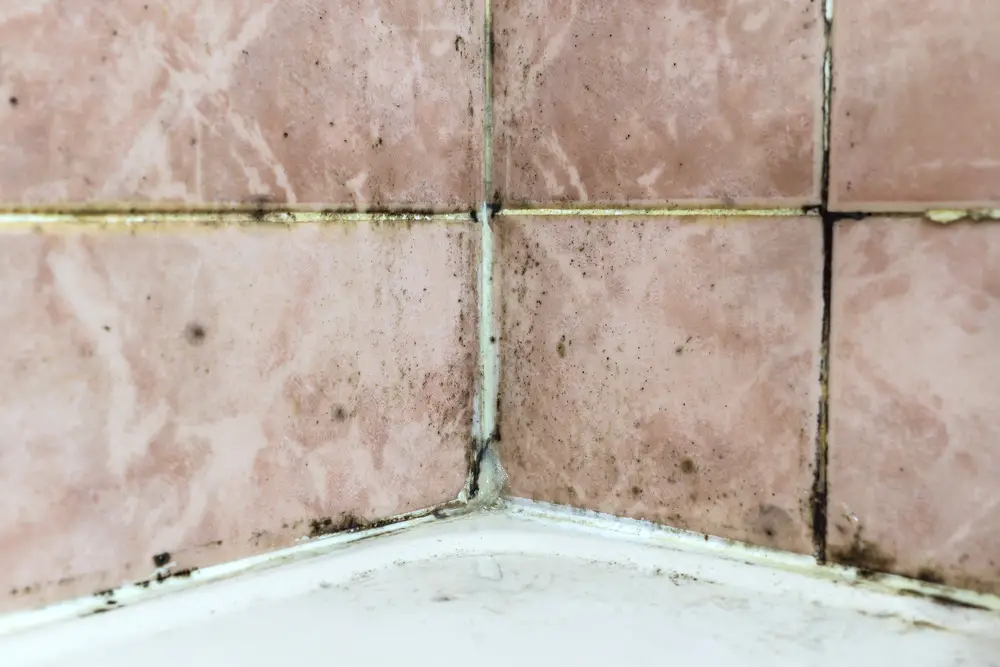Finding or suspecting any kind of mold in your home is always a worry. However, when you mention the words ‘black mold’ alarm bells start ringing.
In this article, we are going to be answering some important questions about black mold to try and ease your worries a little.

How do you know if it is black mold?
You can usually tell if you have black mold by keeping your eyes peeled (and noses peeled) for some tell-tale signs and symptoms.
These symptoms and signs include a musty smell, visible mold appearing as spots or rings, unexplained respiratory issues, and growths of fungus and mold spores.
You should investigate anything that you think may be black mold (or any type of mold or fungus) as it is better to be safe than sorry. Check out our four tell-tale signs in more detail below.
Smell
Black mold will often have a distinctive smell. It can produce a musty, dirty smell, that is similar to when water is left to stagnate for a long time. Some people also liken the smell of black mold to dirt and wet leaves that haven’t been swept up.
The reason for this is that it is most often caused by too much water and moisture. For example, black mold is most common in areas that have been flooded.
Your flooded basement is a common place to find black mold growing, as is your bathroom where there may have been leaks under the bath or shower. Look out for those musty smells in these places as a tell-tale sign of black mold.
Visible mold
Black mold is so-called because of its appearance. With this in mind, one of the easiest ways of spotting black mold is by looking out for visible patches of black.
These can appear as rings, spots, lines, or watermarks and will be black or dark gray. You may also find that they have a green or blue tinge to them too.
Respiratory system irritation
If you suddenly start to experience respiratory issues such as the sniffles, a cough, tight chestedness, sore throat, or anything that seems like your allergies are playing up, then it may be worth considering whether the cause could be black mold.
Black mold is notorious for causing respiratory issues. Whilst it is not lethal in most cases, in those with underlying health conditions, these mild respiratory issues can turn into something more serious and sinister such as pneumonia, and may even cause death in those who are seriously unwell.
Growths
Growths of fungus and mold growing from conspicuous patches where moisture is likely may also be a sign of black mold. They are certainly a sign that something is wrong, even if black mold cannot be located.
Any signs of fungus or mold of any kind even if it is not black should be investigated as a matter of urgency.
How can you tell if black mold is active?
Active mold looks different from inactive mold, and so there should be some visible signs for you to see if your suspected mold is active.
Look out for a webbing-like filament that resembles hair. This can develop out into a more bushy appearance as the bloom of the mold matures.
In comparison, inactive mold is flakier in appearance and can look and feel powdery (although we do not recommend that you touch anything that you think might be mold).
You may also find that the surface layer of inactive mold can be brushed off relatively easily, whereas it is much more difficult to remove black mold from the surface.
Is black mold dangerous if not disturbed?
Black mold can still be dangerous even if it is left untouched as it can cause respiratory issues. However, the wet coating that is often present on top can prevent the toxic spores from being released into the air.
However, disturbing black mold is far more dangerous in comparison as not only are there toxic spores present on the surface, but the disturbing of the mold can cause these toxic spores to be released into the air.
This is because you can remove the wet layer of the mold when you disturb it, thus rendering the spores more likely to become airborne. This can travel around the room or house faster than if the mold was left undisturbed.
Generally, if you do find black mold on your property, there is no need to panic.
However, if there are vulnerable people in your house who are more prone to illness (especially respiratory illnesses) or if you are unsure of how best to remove it, then it may be worth calling a professional.
You shouldn’t try and remove toxic black mold yourself, so it is always best to get the opinion of a professional.









